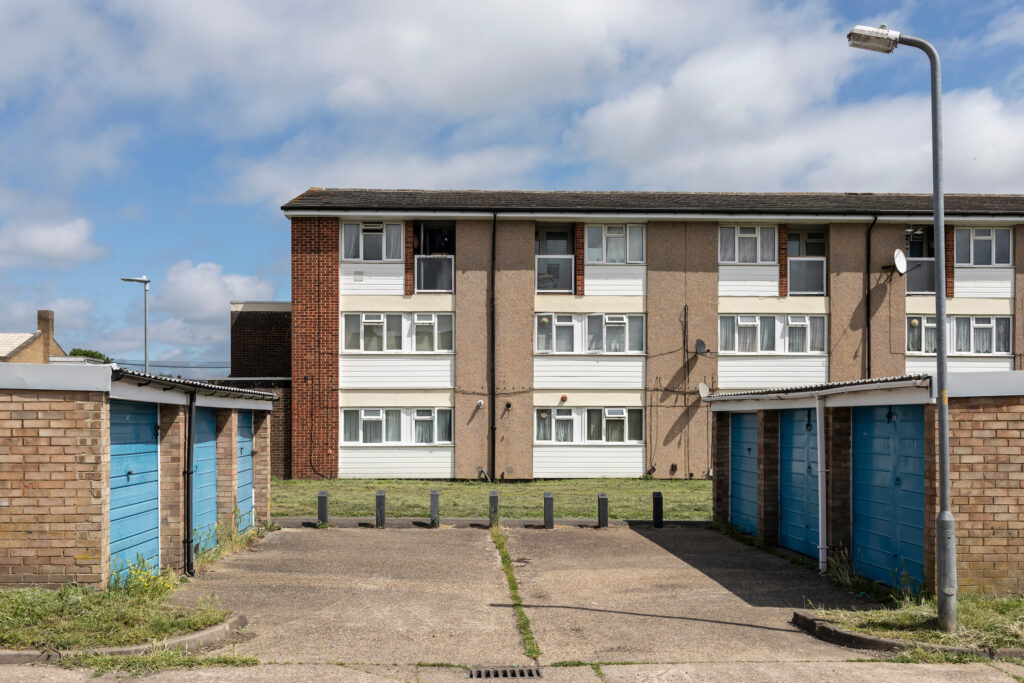Lessons from past neighbourhood renewal policy
Richard Crisp, researcher at the Centre for Regional Economic and Social Research (CRESR), introduces new research into the effects of past neighbourhood regeneration policy.
Inequalities across neighbourhoods in England are stark. The gap in average annual household incomes (after housing costs) between the richest and poorest neighbourhoods currently stands at £49,500, according to the latest ONS data.
This difference between a wealthy London neighbourhood and a low income area in Bradford may not surprise many. However, the gap between the richest and poorest neighbourhoods within towns and cities is also stark: in Manchester, for example, it stands at £23,500.
While regeneration alone cannot reverse income inequalities, there is extensive evidence that some neighbourhoods experience greater disadvantage across a range of indicators including employment, education, health and crime.
This is more than just a function of these neighbourhoods having higher concentrations of people on low incomes or fewer labour market opportunities. The services and facilities offered in neighbourhoods also make a difference to people’s lives. ‘Left behind’ neighbourhoods which have high levels of deprivation and lack social infrastructure are associated with worse social outcomes such as higher crime.
Policy interest in tackling neighbourhood-level inequalities has waxed and waned over recent decades. It peaked with the launch of the National Strategy for Neighbourhood Renewal (NSNR) in 2001 by the ‘new’ Labour government.
This set out an ambitious vision that “within 10 to 20 years no-one should be seriously disadvantaged by where they live” and centred on an energetic, decade-long programme of neighbourhood regeneration initiatives.
The election of the coalition government in 2010 saw this focus on neighbourhoods fade away. While more recent policies have aimed to ‘level up’ disparities between areas, funding programmes target the economic regeneration of cities and town centres rather than the issues facing residents living in low-income neighbourhoods.
The effectiveness of past policy
So, is the time ripe for a renewed policy focus on tackling inequalities across neighbourhoods? The CRESR team, based at Sheffield Hallam University, have set out to answer this by conducting a rapid evidence review commissioned by Local Trust, to be published next month.
It looks at evidence on the effectiveness of past regeneration programmes in England, and also consults policymakers and practitioners on the need for a new round of urban regeneration.
Some clear messages emerge from this work:
- Evaluations show that the NSNR and its two flagship programmes (the New Deal for Communities and Neighbourhood Management Pathfinders) consistently generated positive outcomes for neighbourhoods. These programmes were highly effective in achieving outcomes around ‘place-based’ factors such as area satisfaction, improvements to local environment, and reductions in crime and anti-social behaviour. There were also improvements in ‘people-based’ outcomes such as health and worklessness for those who directly took part in NSNR initiatives, although less change was seen across target areas as a whole.
- Research also highlights the value of engaging communities. Residents involved in neighbourhood regeneration initiatives (e.g. sitting on boards, being involved in projects, or attending community events) were more likely to:
- feel satisfied with where they live
- feel able to influence local decision-making
- feel that their neighbourhood was improving
- express trust in others and local agencies
- be involved in local voluntary activities.
The finding that neighbourhood regeneration improved outcomes for many residents living in low income neighbourhoods supports the case for a new neighbourhood renewal strategy.
The need for a new round of neighbourhood regeneration is all the more urgent to build community resilience given the unprecedented stresses that residents in low–income areas face.
No-one should expect this to solve inequalities overnight, as many of the problems residents face are complex or beyond the scope of neighbourhood-level initiatives (e.g. national tax and benefit systems).
However, the evidence clearly shows that neighbourhood regeneration can make an important difference to quality of life, particularly in changing the way people feel about the place where they live and their sense of belonging – a key component of wellbeing and ‘pride in place’. It can also enhance outcomes around health and employment where residents take part in regeneration initiatives.
The need for a new round of neighbourhood regeneration is all the more urgent to build community resilience given the unprecedented stresses that residents in low income areas face. This includes the ongoing impact of the cost of living crises, poor environmental quality and climate change, crises in mental health and wellbeing, the COVID-19 pandemic, and the hollowing out of public services following austerity.
A renewed vision for neighbourhood regeneration
Against this backdrop, a renewed vision for neighbourhood regeneration is essential. Enduring lessons from past programmes include the need for any new strategy to be built around long-term investment, community-led decision-making, a clear purpose and vision, and robust evaluation.
But any new generation of neighbourhood regeneration policy also needs to adapt and evolve to a context which is more challenging than the economic and political environment in which the NSNR was launched.
It should be underpinned by new goals including:
- investing in social infrastructure to build resilience
- supporting collective wellbeing beyond economic objectives
- enhancing connectivity to other areas and the local accessibility of employment opportunities, services and amenities
- strengthening residents’ sense of belonging and attachment.
Closing the gap in outcomes remains important, but so too is building the capacity, resilience and resourcefulness of communities to adapt and thrive in challenging times.
To find out more about the National Strategy for Neighbourhood Renewal, watch Local Trust’s CEO Matt Leach in conversation with Baroness Armstrong, Minister for Local Government, Housing and Regeneration between 1997 and 2001, at an event held to preview the CRESR research on 17 October 2023.
Richard Crisp is a researcher at the Centre for Regional Economic and Social Research.

